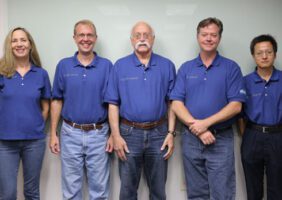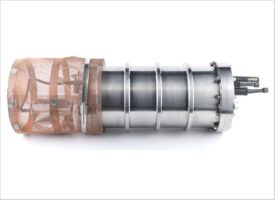The health of the world’s oceans impacts all of our lives, because oceans are much like the lungs of our planet, albeit acting in reverse—consuming carbon dioxide (CO2) and releasing oxygen. The Wendy Schmidt Ocean Health XPRIZE aims to improve understanding of how CO2 emissions are acidifying the oceans through a $2 million competition to create pH sensor technology that accurately and affordably measures ocean pH levels.
Unfortunately, the high level of CO 2 in the atmosphere is changing the chemistry of the oceans because the absorbed CO 2 reacts with the water to form an acid. Over time, this results in the oceans becoming more acidic (a process known as ocean acidification) and has serious implications for the entire marine ecosystem.
A lower pH value corresponds to an increase in acidity. While decreased ocean pH has been documented in specific areas, the ability to measure ocean acidification (pH) across coastal regions, in high latitudes, and through the ocean depths will increase understanding of the magnitude of the problem so that future solutions can be developed.

Bob Byrne (USF), Jac Fought (Battelle), Sherwood Liu (USF).
An SRI-led group, TEAM SEAS, is competing for the XPRIZE. We recently completed Phase 2b Lab Trials in which participating teams’ technologies underwent a rigorous three-month trial in controlled laboratory conditions to test the accuracy, precision and stability of their sensors. TEAM SEAS and 13 other teams have just started Phase 3 Coastal Trials. Our technologies will face challenging coastal conditions to evaluate performance over a month-long, real-world test.
Along with marine researchers from SRI, TEAM SEAS includes researchers from University of South Florida (USF), who helped develop the spectrophotometric elemental analysis system (SEAS) technology that forms the basis for our entry. TEAM SEAS also includes colleagues from Battelle Memorial Institute, who provide expertise in protecting instruments from growth of biological organisms and from the high pressure of deep-water environments.
The TEAM SEAS instrument uses the spectrophotometric technique to measure pH, which is like measuring chemistry in a swimming pool: take a sample of water, add a reagent or dye, and compare the resulting color to a reference chart. The SEAS instrument, however, uses light sources and detectors to measure the optical signal—or color—of the water with very high accuracy. Adding to the instrument’s inherent accuracy is the distance through which the optical signal is measured to determine pH—it is much longer than that of other instruments and therefore looks through a bigger sample of water.

The SEAS-pH DEEP sensor
While measuring the pH level of ocean waters is the focus of the XPRIZE competition, the SEAS instrument is adaptable. It can also measure other elements in water such as pollutants, nutrients and trace metals – without reconfiguration. Because the instrument’s broad color detector applies fine grain resolution for detecting color, it can use the same procedure for other measurements simply by using a different reagent and identifying the color change associated with its reaction with that analyte.
Another powerful aspect of the SEAS instrument is that it includes programming to set up basic operation, and the user has full control. The commands are written in easy-to-follow terms, such as “turn on pump,” “turn off pump,” and “read detector,” making it very quick and easy for the user to program a list of commands to run the instrument. For example, if the user wanted to switch from measuring pH to measuring a nutrient, he or she would modify the command to dispense a different reagent and to monitor for a different color. This flexibility and adaptability of the SEAS instrument should prove to be useful for researchers in the oceanographic field, particularly when it comes to securing funding for one instrument with many uses, as opposed to a separate instrument for each use case.
Beyond oceanographic research, there are other potential applications for this instrument in the future. Because it doesn’t require a large sample volume to take measurements, it could be useful in monitoring fertilizer runoff from farms or even measuring the quality of drinking water. In the meantime, the XPRIZE competition gives us the opportunity to put the instrument through real-world testing while advancing our understanding of ocean health.
About XPRIZE
Founded in 1995, XPRIZE, a 501(c)(3) nonprofit, is the leading organization solving the world’s Grand Challenges by creating and managing large-scale, high-profile, incentivized prize competitions that stimulate investment in research and development worth far more than the prize itself. The organization motivates and inspires brilliant innovators from all disciplines to leverage their intellectual and financial capital for the benefit of humanity. XPRIZE conducts competitions in five Prize Groups: Learning; Exploration; Energy & Environment; Global Development; and Life Sciences. Active prizes include the $30 million Google Lunar XPRIZE, the $10 million Qualcomm Tricorder XPRIZE, the $2.25 million Nokia Sensing XCHALLENGE, and the $2 million Wendy Schmidt Ocean Health XPRIZE. Go to www.xprize.org for more information.


